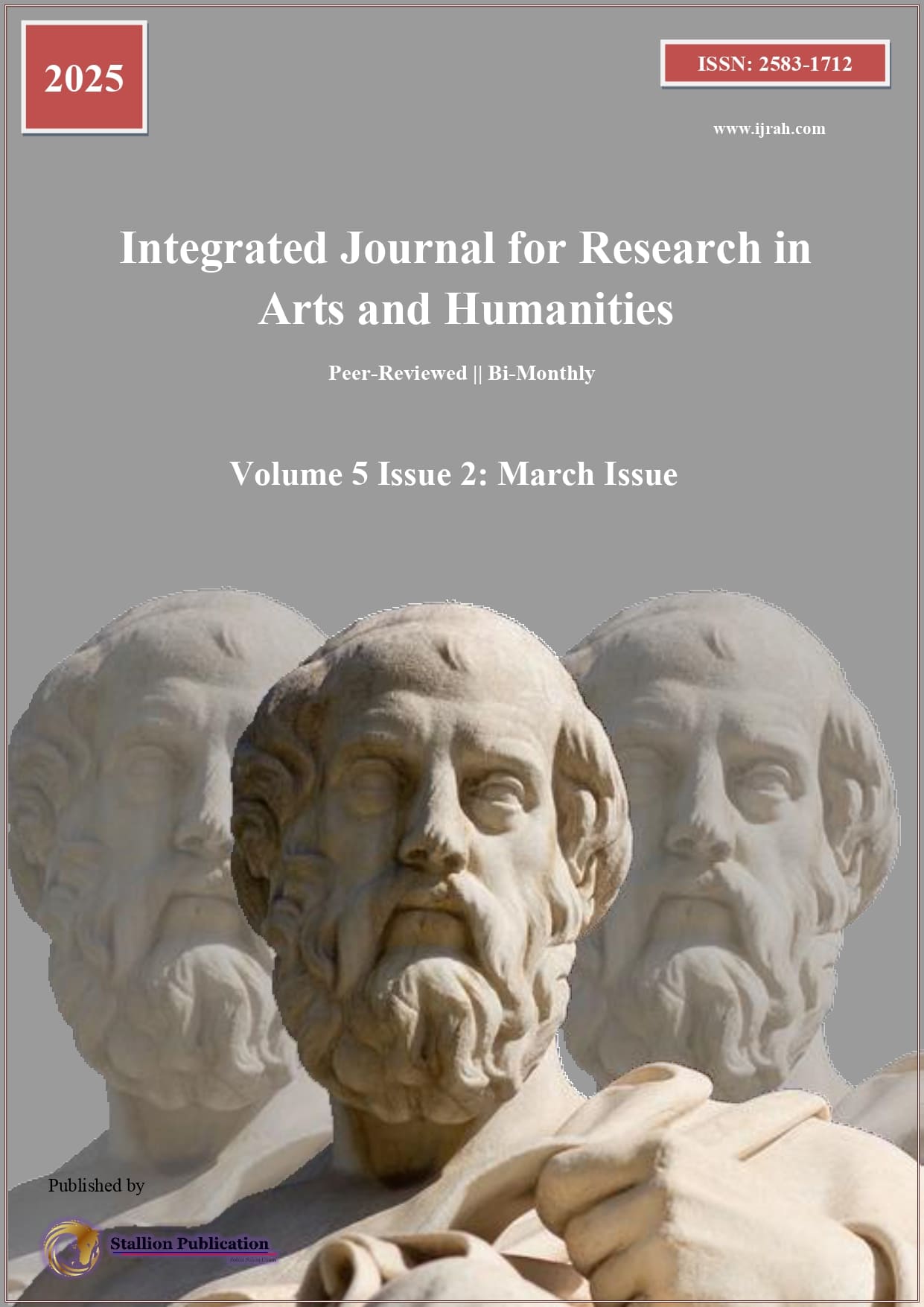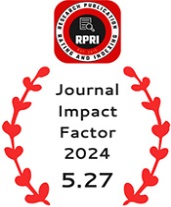Reiterating the Essence of Indian Ethos in Shashi Tharoor's The Great Indian Novel
DOI:
https://doi.org/10.55544/ijrah.5.2.39Keywords:
ethos, historiography, the Mahabharata, universality, valuesAbstract
Shashi Tharoor’s The Great Indian Novel paints a vigorous expression of Indian ethos and values. The narrative is acclaimed for its universality and timelessness, wherein he weaves the story of the Mahabharata with the threads of creativity and modern historiography. The present research endeavour discusses how the ethos is depicted under the garb of unconventional story-telling technique applied by him. Moreover, it pinpoints the description pertaining to the episodes and frequent unpalatable comments made against the noble characters. I have referred the authoritative source of the Mahabharata and the Geeta as a primary reference to justify my arguments for imparting authenticity. Though the author reserves the right to freely express his opinion in this fictional iterating of the Indian saga, it is interesting to counter, criticise, and contend this concoctive rendering and re-assert the purest essence of its teachings resting in Indian psyche.
Downloads
Metrics
References
Ahir, Rajiv. A Brief History of Modern India. Spectrum Books Private Limited, 2017.
“Anasuya”. Wikipedia, Wikimedia Foundation, www. wikipedia.org/wiki/Anasuya. Accessed 20 January 2024.
“Bhishma”. Wikipedia, Wikimedia Foundation, www.wikipedia.org/wiki/Bhishma. Accessed 15 Jan. 2024.
Cuddon, J.A., and Habib, M.A.R. Dictionary of Literary Terms & Literary Theory. Penguin Books, 2014.
“Ethnicity”. Oxford Learner’s Dictionary, Oxford University Press, www.oxfordlearnersdictionary.com/English/ethos. Accessed 25 March 2022.
“Ethos”. Brittanica, www.brittanica.com/art/ethos. Accessed 11 January 2022.
…, Merriam-Webster.Com Dictionary, Merriam-Webster, www.merriam-webster.com/ethos. Accessed 11January 2022.
…, Oxford Learner’s Dictionary, Oxford University Press, www.oxfordlearnersdictionary.com/English/ethos. Accessed 11 January 2022.
“Historiography”. Wikipedia, Wikimedia Foundation, www.wikipedia.org/wiki/Historiography. Accessed 2 January 2020.
Gita Press Mahabharat/Mahabharata 6 Volume Set in Hindi. Internet Archive, www.archive.org/details/unabridged-mahabharta-6-volumes-set-inhindi-by-ved-vyasa-compressed. Accessed 21 January 2024.
“Marriage in Hinduism”. Wikipedia, Wikimedia Foundation, www.wikipedia.org/wiki/Marriage_in_Hiduism. Accessed 15 Jan. 2022.
Muthumari, Tmt M, and Ahmed, Thiru Zafar. History. Government of Tamilnadu, 2007.
Selvan, Immanuvel Sagay, and Soundhararajan, D. “Myth as a Narrative Technique in Shashi Tharoor’s The Great Indian Novel: A Study”. History Research Journal, vol.5, no. 6, Dec. 2019, pp. 1873. www.thematicsjournals.org. Accessed 11 Jan 2022.
Singh, Upinder. A History of Ancient and Early Medieval India. Pearson Education India, 2009.
Shrimadbhagvadgita. Gita Press, 2001.
Skinner, John. “Literary Moonlighting: the Cultural Spaces of Shashi Tharoor”. Revista Alicantina de Estudios Ingleses, n. 16, 16 Nov. 2003, pp. 255-268. doi:10.14198/raei.2003.16.19. Accessed 11 Jan 2022.
Tharoor, Shashi. The Great Indian Novel. Penguin Books, 2014.
Y, Guruprasad S. “Satire in Shashi Tharoor’s The Great Indian Novel”. International Journal of English Language, Literature and Humanities, vol. 2, no. 10, February. 2015, pp. 68-78, www.ijelh.com. Accessed 22 February 2019.
Venkatesan, Dr. M. “Postmodern Narrative Techniques in the Novels of Shashi Tharoor”. Infokara Research, vol. 8, no. 9, 2019, pp. 461-470. Accessed 16 March 2019.
Downloads
Published
How to Cite
Issue
Section
License
Copyright (c) 2025 Dr. Bhaktipriya Bhargava

This work is licensed under a Creative Commons Attribution-NonCommercial-NoDerivatives 4.0 International License.

























